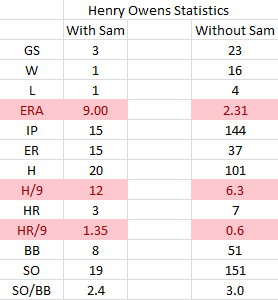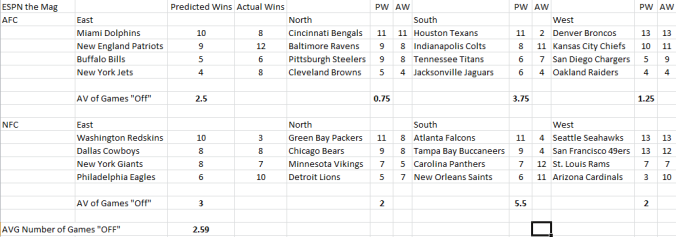The eight men staring down Justin Mattingly were making him sweat profusely, more than he ever had before.
The jangling nervousness persisted despite the fact none of the nine were in the same room. Eight tiny screens crammed onto the Skype conference call interface. Still, their intensity and seriousness both intimidated and exhilarated Justin. These men approached the game with the fastidious earnestness he admired.
He thought back a few weeks.
Mid-summer 2013, Robert Adams, a fellow player in one of Justin’s leagues, approached him about joining another of his fantasy baseball leagues. But first, he said, Justin would have to apply and interview.
Interviewing for a league?
Yes, just like a job.
He had successfully navigated the initial interview, a group chat hosted through Facebook Messenger.
So there he sat, facing the eight-man entrance committee for Fair Ball, a rotisserie league so intense it drafts high school kids who haven’t even been drafted by actual MLB teams yet.
“I may be a student and have other stuff going on,” he said. “But this league is their whole life.”
His application required links to past successful teams so the league could affirm his dedication. In 2012, Justin sent 40 of his 64 teams to the finals with 20 emerging champions. Professionals on the diamond interest Justin, but nothing compares to those who consider themselves fantasy baseball pros.
As Justin awaited their decision, he pondered something he discovered through the application process. According to the league’s commissioner, Fair Ball is ranked the 13th-toughest league in the world by RotoWorld, a fantasy sports site. Did he really want into this?
Had he decided to lay off this pitch, that it was too fast and too tight, it would be to jump off the mountain after climbing arduously since grade school. Passing the interviews and getting into the league is the byproduct of his life’s baseball mélange. From his family, born with foul line chalk in their blood, to a childhood trauma, to Kevin Costner, everything in his life seemed to be leading to this chance. So he accepted.
Now, nearly 18 months later, the Syracuse University sophomore cannot verify the validity of that 13th-toughest league ranking because he’s never seen this list, but he can believe it.
“I hope it’s false, though,” he said. “I pray to God there aren’t 12 tougher leagues.”
***
Justin grew up around baseball, inheriting the love for a ballpark, score card and crackerjack box from his dad, who in turn had learned how to love the game from his father. Baseball fandom is a congenital condition in the Mattingly family.
Connie and his father Wayne took the family to see every Major League park. They’ve been to all 30 current MLB stadiums, including a few more, such as old Yankee Stadium and Olympic Stadium of the now-defunct Montreal Expos.
It was on one of these trips – he thinks it may have been 2000 – when Justin saw Albert Pujols playing for the Peoria Chiefs, St. Louis’ Class-A affiliate. It took young Justin one game of in-person viewing for the sweet-swinging righty to become his favorite player.
Suddenly, Justin bled Redbird red. He lived with wins and died with losses, blogged daily about the Cardinals and took up the harmonica in homage to Stan Musial.
Wayne understood. Justin emulated him that sense. The Big Red Machine of the Cincinnati Reds, particularly hard-nosed Johnny Bench, drew in Wayne when he watched NBC’s Game of the Week during the 1960s and ‘70s.
Wayne not only watched baseball throughout high school, but played, too. Justin’s older brother Jarrod even played college ball at Clarkson University in New York. Justin followed suit, but didn’t have the heart for playing.
As it turned out, Justin loved watching the pros play ball more than he loved taking the field himself.
“Justin was a good player and enjoyed it when he was young,” Wayne says. “But he wasn’t as passionate about being a baseball player as much as he was being a baseball fan.”
For some parents, this would’ve been devastating. The worn tale of a parent living vicariously through their children is all too familiar, and teaches us that only tension and anguish can come from that. But Wayne, who still lives in the same small town he grew up in, isn’t like that at all.
“If (Justin) was worried about disappointing me, he shouldn’t have been,” Wayne said. “It’s his life and he has to do what he wants.”
***
Justin started playing at 7-years-old on a Sports Illustrated for Kids site, which should come as no surprise because of his love for players, á la Pujols. He established a “Fathers-Sons” league with four friends, their dads, and his dad. Just as fantasy baseball’s inventor Dan Okrent has never won a league, Justin has never won the “Fathers-Sons” league. He’s even lost to his dad in the finals a few times.
After being reeled-in his first year, Justin gave himself up to the game.
By the time he was in high school, he thought, “Why should I mock draft? It’d be fun to just make this draft another league.” As he drafted, his list of teams grew longer and longer. He didn’t know when to stop. It struck him one day while he watched March Madness on the television. A 64-team tournament…hm, why not run 64 teams?
It should also be noted that all 64 leagues are free, there is no prize money. The rewards are glory, happiness and an excuse to watch more baseball.
Justin may be an extreme case, but he is not so different from many others. He’s one face of the growing masses. According to the Fantasy Sports Trade Association the number of Americans playing fantasy sports has more than tripled in the last decade, up to a record 41.5 million this year. This means roughly 13 percent of Americans play fantasy sports. A 2013 Forbes article estimated that fantasy was an industry worth upwards of $70 billion – and that’s just the football sector.
Fantasy had stunted growth in infancy due to both the perception of it as a geeky game and the difficulty of collecting box score statistics. But with the Internet, keeping stats became easier. Justin has quite literally grown up with fantasy sports as they slowly gained traction beginning when the Internet was fully commercialized in 1995 – the same year Justin was born.
Justin is one of the first to come of age in the era of fantasy sports popularity. He is a pioneer of the changing way to show love for the game: through fantasy. His generation is the first to experience baseball like this, connecting to the game by digitally “interacting” with the player rather than catching the game of the week on national TV or purchasing packs of baseball cards. People now arguably spend more time with baseball than ever before as they manage their teams. The common fan knows more about MLB as a whole rather than knowledge of just their hometown club. With increased player exposure, the concept of hometown teams has also lessened, just a little. After all, how did a New Yorker end up with incurable Redbird fever?
After Britain’s victory in the Seven Years’ War in 1773, George Macartney wrote, “This vast empire on which the sun never sets…” and the same applies to Justin. Sun up or sun down, Justin’s lineup tinkering. He spends copious amounts of time – 60 to 90 minutes per day – configuring his 64-ship fleet.
To control his empire, Justin runs most squads through the usual suspects – Yahoo!, CBS and ESPN – but one league operates through Facebook Messenger. Each team drafts on the message board. Then, by hand, they each keep painstaking track of their own stats, transactions and points scored.
In those years, from the beginnings on SI Kids, his love for baseball has grown into what several people, from his father to his best friend, have called “obsession.”
“An ex-girlfriend said that once,” Justin says. He pauses, then smiles, “Which is really funny because she’s an ex-girlfriend.”
He treats this trade-off like receiving a no-brainer offer in one of his leagues.
***
To fully understand Justin, you need to take into account what he calls the worst day of his life.
December 8, 2011: Sitting in 11th-grade English, he checks his phone – something he’s done every five minutes for countless days – to finally realize a nightmare: Pujols is leaving the Cardinals.
See, there are a few things you should know about Justin. He is a devout Christian. He describes the day he anticipates drinking a Budweiser while watching a baseball game with his friends – but not a day before his 21st birthday. In everyday conversation, Justin forgoes profanity for expressions like, “Aw, shucks!” In short: He’s a pretty good kid.
But he is not that boy this day. Something inside him detonates and an explosion rips through the classroom. Dropped F-bomb shrapnel flies dangerously around the room. Justin runs from class without even asking the teacher.
Devastated in the bathroom, he calls his mom, pleading to be picked up. But she says no. His mother, Connie, wants him around people. He cannot be alone in this moment. Forced to leave his hideaway, he spends the rest of the day lying prone, motionless on the floor of a sympathetic teacher’s classroom.
Usually, Justin’s not like this, not so inconsolable and irrational, unable to function when something that seemingly insignificant impacts his life. I know him as easy-going, intelligent and affable. But he had built up baseball as such a crucial part of his life – Pujols centering that universe – that this abandonment of order lurches his world over the precipice, into chaos. As the Pujols Pedestal topples, Justin unhinges slightly in an attempt to physically deal with the emotional distress.
Once home on that dark day, he’s forced to confront the man. The wall above his bed is plastered with cut-outs, a shrine to Pujols. In the bedroom of his Philadelphia, N.Y. home, Justin sits on the floor, staring up at his hero. His mom comes in.
They cry together, Justin for Pujols and Connie for her son.
***
As Justin tells me these baseball stories, he can’t help but stop to laugh, his teeth framed by a dark, scraggly beard which extends to his brown, closely-cropped hair. He casts a concerned look at me through his glasses every two or so tales to make sure he’s neither boring nor overwhelming me. He will get midway through a needless apology for talking so much before realizing he’s done neither. He’ll break off mid-apology, energetically hurtling into his next story animatedly waving his arms.
Though Justin loves telling stories, his dad didn’t know how many teams Justin had until I asked him.
And that, for Wayne, is perfectly reasonable because, well, how could anyone think Justin has time? Even before the 64 teams, every summer Justin works 20-hour days across four jobs. He doesn’t even drink coffee.
Within the Perfect Game Collegiate Baseball League (PGCBL) alone he holds two positions: Assistant to the President as well as Media Relations Director for the Watertown Rams, a league team. When he’s not at the park, he’s serving at Riley’s By The River, an Alexandria, N.Y. restaurant, or acting as the Assistant News Editor for Syracuse’s University’s newspaper, The Daily Orange.
Marcus Shelmidine, Justin’s roommate at Syracuse and co-worker for the Rams, says Justin does a lot of work and does it well.
The two were teammates for travel sports in high school, southpaw Marcus pitching with Justin behind him at short. Their competitive friendship continues with late-night, high-stakes FIFA battles.
But when they’re not playing the fútbol videogame, Justin is up late nights anyway.
“Every night he would stay up later than me, and I’d be up until 1 or 2 a.m. doing homework,” Shelmidine said. “Last year, when the (fantasy baseball) mock drafts came out, Justin would stay up so late.”
Marcus remembers this time fondly, “His light pissed me off.”
***
Prime drafting time for fantasy baseball leagues is February and March. Combined, those two months have 59 days. Justin’s in 64 leagues.
He drafts at least once per day for those two months, plus he still mocks to hone strategy.
This past year, he ran into a dilemma.
The drafts of his two most important leagues – one of them being Fair Ball – fell on the same day he was scheduled to fly back to Syracuse. He was returning from spring break in Florida where he and his grandparents attended spring training games. As a lone flyer on a Saturday morning, Justin was offered a bump by the airline to a later flight, plus $500 airline credit. The next flight didn’t depart until Sunday morning, but money outweighed delay. Plus, it didn’t matter where he drafted from as long as he had his computer.
Justin’s been looking forward to draft day since the World Series ended.
“No matter what people say, whether it’s your mom’s birthday, or Christmas,” Justin said. “Nothing is as important as auction day.”
He crafts a gigantic spreadsheet including player rankings from over 30 sources (Baseball Prospectus, ESPN, Tristan Cockcroft, etc.) for auction values. He compares them to one, almighty predictor.
“Ron Shandler’s Baseball Forecaster is my bible,” Justin said. Those sources are plugged into the spreadsheet and then he goes to work taking averages. But Shandler defies the law of averages because Justin, in any conflict, goes with Shandler.
Though he wasn’t comfortable, he hunkered down in an airport seat bunker in a corner of Ronald Reagan national airport. He drafted from two in the afternoon until eleven at night.
Soon after, he drifted off to sleep. Around 3 a.m., security guards forced him to move to a different section of the airport. Despite all the hassle he remembers the day with a smile.
As we continue talking, it becomes clear that he isn’t just talking about the plane ticket. The game itself means so much more. Fantasy Baseball is just a vehicle to be closer to the action. It’s his way of being a part of the game he loves.
In the “Fathers-Sons” league, his dad holds the bragging rights for his titles – won by defeating Justin no less. But winning is not the true meaning of father and son playing together. Justin describes fantasy baseball as “The Great American Game” because, for him, fantasy is tangible. He compares the league to the quintessential scene in Field of Dreams when Kevin Costner says, “Dad, wanna have a catch?”
Fantasy baseball is that catch. Spending time together, with a common love for the game…that’s the point. That’s the point to all of this; Justin’s father overcame apprehension about fantasy baseball to interact with his son, just to be there with him.
Justin later said he’s considered cutting back next season because it’s too taxing to manage so many teams. But the number of teams doesn’t matter, because he won’t change. Whether he manages 64 teams or just one, whether he’s in the toughest league in the world or just the one with his dad: Justin will love the game the same.
Justin pauses toward the conclusion of his overnight airport story. His eyes glaze over. His narrative had started in the airport, but taken off and flown higher and higher until, out of the window seat, he looked down, surveying his life’s landscape. Dispersed throughout that landscape of rectangular crop fields and city buildings, baseball fields litter the land.
Baseball fields are, after all, easy to identify from an airplane seat.
As he spoke of the night spent drafting in the airport, his words may have held greater meaning.
“I think I would do it again,” he said. “Because it all – I mean, everything – comes back to baseball.”
Sam Fortier is a displaced New Englander living in New York as a freshman at Syracuse University. He likes baseball, crunchy peanut butter and using the word “wicked” as an adjective. He’s not a fan of purposefully misspelt business names (“Kathy’s Kut & Kurl”) or grammatical error’s. You can read him here every Monday, follow him on Twitter @Sam4TR, or email him at sam.fortier@yahoo.com.




